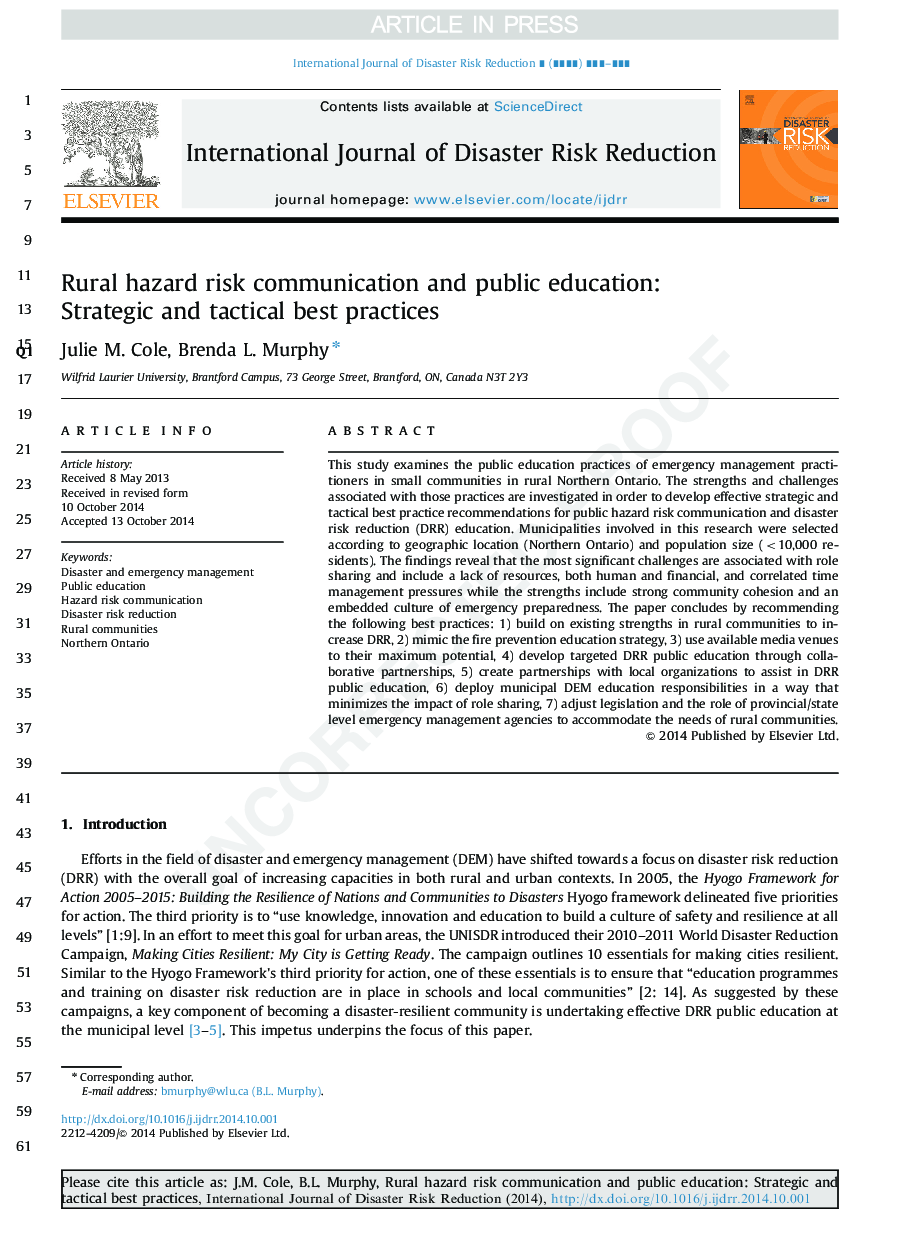| Article ID | Journal | Published Year | Pages | File Type |
|---|---|---|---|---|
| 7473408 | International Journal of Disaster Risk Reduction | 2014 | 13 Pages |
Abstract
This study examines the public education practices of emergency management practitioners in small communities in rural Northern Ontario. The strengths and challenges associated with those practices are investigated in order to develop effective strategic and tactical best practice recommendations for public hazard risk communication and disaster risk reduction (DRR) education. Municipalities involved in this research were selected according to geographic location (Northern Ontario) and population size (<10,000 residents). The findings reveal that the most significant challenges are associated with role sharing and include a lack of resources, both human and financial, and correlated time management pressures while the strengths include strong community cohesion and an embedded culture of emergency preparedness. The paper concludes by recommending the following best practices: 1) build on existing strengths in rural communities to increase DRR, 2) mimic the fire prevention education strategy, 3) use available media venues to their maximum potential, 4) develop targeted DRR public education through collaborative partnerships, 5) create partnerships with local organizations to assist in DRR public education, 6) deploy municipal disaster and emergency management (DEM) education responsibilities in a way that minimizes the impact of role sharing, 7) adjust legislation and the role of provincial/state level emergency management agencies to accommodate the needs of rural communities.
Related Topics
Physical Sciences and Engineering
Earth and Planetary Sciences
Geophysics
Authors
Julie M. Cole, Brenda L. Murphy,
